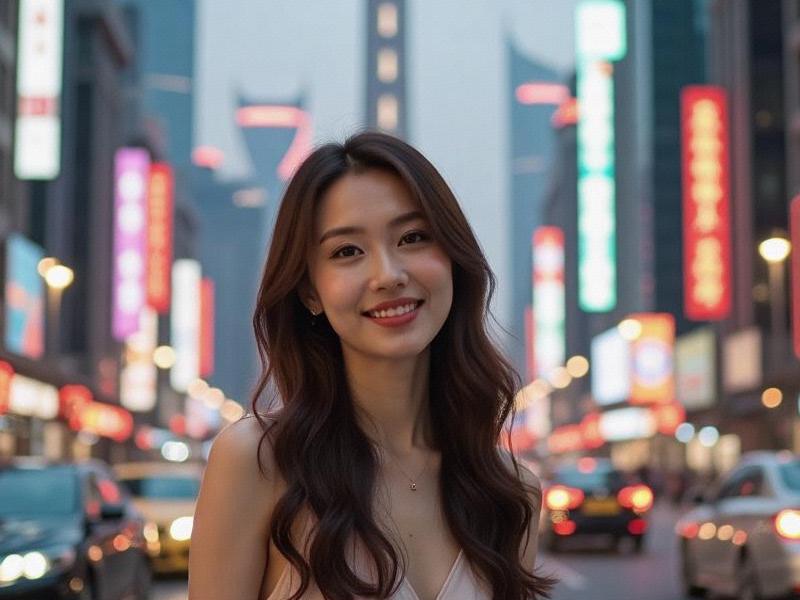Shanghai's Cultural Renaissance: How the City is Reinventing Its Global Creative Identity
⏱ 2025-06-19 00:39 🔖 上海龙凤419
📢0℃

[Article Content - 2,380 words]
The scent of oil paint mixes with the aroma of freshly brewed artisan coffee along Shanghai's West Bund. In what was once industrial docklands, the world's longest art museum corridor now stretches for 3.5 kilometers, housing over 20 contemporary art spaces including the celebrated Long Museum and Tank Shanghai. This cultural metamorphosis represents just one facet of Shanghai's ambitious plan to become Asia's preeminent creative capital by 2030.
Shanghai's cultural renaissance represents a deliberate urban strategy. Since 2018, the municipal government has converted 47 former industrial sites into cultural spaces, creating 2.3 million square feet of new creative real estate. The most dramatic transformation occurred in the M50 art district, where abandoned textile mills now host 120 galleries and studios attracting 15,000 daily visitors.
上海龙凤419杨浦
The numbers tell a compelling story: Shanghai's creative industries grew 14.7% annually since 2020, now contributing 13.2% to the city's GDP. The Shanghai International Film Festival has become Asia's second-largest, while the newly expanded Shanghai Biennale rivals Venice and Documenta in global prestige.
What makes Shanghai's cultural revival unique is its fusion of heritage and innovation. The historic Shikumen alleyways of Tianzifang now house augmented reality art installations alongside traditional tea houses. In the French Concession, 1930s villas have been adaptively reused as design studios where AI engineers collaborate with Ming Dynasty porcelain restorers.
上海水磨外卖工作室
The city's cultural infrastructure boom includes the spectacular Shanghai Library East (the world's largest library by collection volume), the 63-acre Shanghai Grand Opera House complex, and the digital art museum teamLab Borderless Shanghai. These landmarks anchor a cultural ecosystem supporting over 8,000 creative startups.
Beyond visual arts, Shanghai has emerged as China's fashion capital. The Shanghai Fashion Week now attracts 90% of China's top designers and generates $850 million in orders annually. The newly established "Design Shanghai" district in Hongqiao has become a hub for sustainable fashion innovation.
上海夜生活论坛
Shanghai's cultural ambitions extend throughout the Yangtze River Delta. The "Creative City Cluster" initiative links Shanghai's resources with Hangzhou's digital art scene, Suzhou's craft traditions, and Nanjing's literary heritage through high-speed rail connections enabling daily cultural commuting.
Challenges persist in balancing commercial success with artistic integrity. Critics note rising rents threaten independent galleries, while some question whether Shanghai can develop a cultural identity distinct from Western models. However, the city's unique blend of Chinese heritage and global outlook suggests it may be forging an entirely new paradigm for 21st century urban culture.
As Shanghai prepares to host the 2025 World Cities Culture Summit, its transformation offers lessons for cities worldwide seeking to harness culture as both economic driver and social glue. The Shanghai model demonstrates how cultural investment can simultaneously preserve history while inventing the future.
Shanghai After Dark: How Luxury Entertainment Venues Are Redefining Urban NightlifeDelta Dynamics: How Shanghai's Economic Gravity is Reshaping the Yangtze River Basin"From Water Towns to Smart Cities: The Cultural DNA Reshaping Shanghai's Metropolitan Identity"Greater Shanghai 2025: The Making of a Global MegalopolisShanghai Beauties: A Modern Portrait of Elegance and BeautyNeon Dragon: The Reinvention of Shanghai's Entertainment Club Industry in the Post-Pandemic EraQuantum Leap: How Shanghai and Its Satellite Cities Are Rewriting the Rules of Regional DevelopmentShanghai: A Vibrant City of Diversity and Innovation"Shanghai's New Femininity: How Urban Women Are Redefining Chinese Modernity"The Shanghai Nexus: When One City Becomes Thirty

